
–– The newsletter on wine and wine travel ––
–– Read by wine lovers and wine professionals all over the world ––
–– On the internet since 1996 ––
How do trends in the wine world start?
 How could pinot grigio from Italy become such an export success? A grape that was barely even found in Italy 20 years ago. It appeared out of nowhere, was shipped across the Atlantic and became America’s most popular white wine.
How could pinot grigio from Italy become such an export success? A grape that was barely even found in Italy 20 years ago. It appeared out of nowhere, was shipped across the Atlantic and became America’s most popular white wine.
A new DOC was created a couple of years ago. It covers almost all of north-western Italy and is primarily dedicated to pinot grigio. The grape is now one of Italy’s most planted and is rapidly getting closer and closer to sangiovese. But in most cases, it produces relatively unremarkable wines. How did this happen?
The success was a given in the United States as soon as the Italians put the name of the grape on the label. Pinot grigio, easy to pronounce but still wonderfully Italian. I do not think the French would have had the same success with pinot gris. It doesn’t have the same feeling to it.
You attract customers with the packaging, with a beautifully designed label. And with the grape name. Virtually all grapes have synonyms. Why not look for one that looks enticing on the bottle?
Think of the story with zinfandel and primitivo. The first is firmly rooted in California, the second in Puglia in southern Italy. What a boost it must have been for the producers when it was discovered that it is the same grape.
Both regions suddenly had a new grape to attract customers without having to replant the vineyard. Primitivo from California for customers who want to discover something new. In the United States, primitivo sounds more sophisticated. And Italian. Zinfandel from Apulia for those who think that primitivo needs extra everything. You can choose the name according to the target group.
You can also choose a synonym that will give an indication of the style of the wine. It has been done for a long time with shiraz and syrah. Shiraz on the bottle and the consumers will guess that the inspiration comes from Australia, with syrah, they will more likely think France. In Germany, they have their own name for pinot gris/grigio, namely grauburgunder. Another German synonym for the grape is ruländer, but then the wine is sweet. The name of the grape can be a wealth of information.
Because unknown grapes are so popular today, why not call your chardonnay morillon blanc instead, a synonym used in Austria? But also sometimes in Languedoc – we know at least one producer in Languedoc who does so – to (maybe) fool those who do not want chardonnay but instead something new and exciting. It worked on us. But it doesn’t matter. The wine was good.
But maybe it’s a tendency that is about to be reversed? Is the next trend to put the soil type on the label? We have already seen “schist” (slate) on labels. And a hot theme today is wines from volcanic soils. The fact that virtually all soil types (except the sedimentary ones) are volcanic, including granite, perhaps matters less?
In the Brief
This month we continue our series on organic wines and similar methods. This month’s two articles are about topics that are often misunderstood and often cause heated debate: biodynamic wines and “natural wines”.
If you want to know what these concepts stand for, without the controversy, with facts and with our analysis, then read this month’s articles. See more below.
In the Brief, you can read about plenty of other things as well, for example, about the National Wine day in Moldova, which you can participate in on Saturday, wherever you are.
Travel
It’s still calm on the travel front. Not totally “all quiet” but pretty close. We have just completed a fantastic trip to Sicily, an island with many surprises. And with volcanic wines.
Otherwise, it will be a wait until next year. We have some great classics on the program for spring 2021 and are just putting the final details in place for autumn 2021. If you want to plan long-term, the magnificent winter tours to the southern hemisphere will return in winter 2022.
See more below.
We look forward to the world eventually returning to a little more normal and to that you will soon start to crave travel again. We already feel it.
And when you long to get out in the vineyards, we hope you choose to travel with someone who specializes in wine travel, who can give you that exceptional experience, someone whose aim is not lure you to buy certain producers’ wines, and who really knows about wine.
You know who we mean, I hope.
We look forward to seeing you again soon.
Feel free to send us an email and tell us about your longing for the vineyards.
Enjoy the Brief!
Britt & Per
If you appreciate what we do, you can help us:Tell your friends about the Brief or send it to them.
Like us and follow us on social media:
What’s on at BKWine Tours
BKWine is also one of the world’s leading wine tour operators. Here’s what we currently have on our scheduled wine tour program:
- South America, Chile and Argentina, January 18 – 31, 2021
- New Zealand, February 18 – March 5, 2021
- South Africa, March 17 – 26, 2021
- Bordeaux, April 21-25, 2021
- Champagne, May 19-23, 2021
- Champagne, September 22-26, 2021 (possible combination with Bordeaux)
- Bordeaux, September 29 – October 3, 2021 (possible combination with Champagne)
- Chile-Argentina, January 2022
- South Africa, February 2022
- New Zealand, March 2022
We also make custom designed wine tours.
We’re different than most other wine tour operators. We are people who know wine inside out, who travel constantly in wine regions, who write award winning books about wine. Who do this out of passion. Our tours are different from others. More in wine tours: BKWineTours.com.
Read our books
We have written several wine books, ten at the last count. Unfortunately, only one of them has been translated to English; the others are (so far) only available in Swedish. This is the one that is available in English:
All our books are on wine, but on different subjects: wines of the Languedoc, wine growing and wine making, the wines of France, Tuscany, Bordeaux, Piedmont, Burgundy, Champagne. Several have won prestigious prizes and awards from Gourmand International, OIV and others. Read more on our wine books.
News from the world of wineWhat’s been happening in the world of wine recently. |
National Wine Day in Moldova 3-4 October, new version, online
And in addition: For anyone who cannot travel to Moldova right now, but who wants to know more about this exciting wine country on the eastern outskirts of Europe, a Zoom webinar will be organised on October 3 at 7 PM Moldovan time (6 pm French/central European time) with wine experts and journalists from different countries. The webinar is hosted by Jamie Goode, a well-known English wine journalist. To register, click here. Read our series of articles about Moldova the wine country here. |
Early and excellent harvest in the autumn of 2020
Languedoc has had a good harvest all over the region with good autumn weather, fine grapes, good quantity and promising quality. From Sancerre, Domaine Henri Bourgeois announces that the first grapes were picked on August 31. Good quality overall, not least the pinot noir wines look very promising with a good balance between sugar, acidity and tannins. Bernard Duseigneur at Domaine Duseigneur in Châteauneuf-du-Pape tells us that, contrary to the northern Rhône, he suffered neither from drought nor from extreme heat. “We’ve had just enough of both, so the juices are well balanced in alcohol and acidity with medium-bodied tannins. So far the vintage looks promising”, says Bernard, but he adds that he has to wait until the end of the fermentation to have a more precise idea. |
Kullabergs Winery awarded with both gold and silver
Winemaker K Felix G Åhrberg has previously studied at Klosterneuburg in Austria, which of course made it even nicer to win medals in an Austrian wine competition. K 2018 is a dry white wine which, says the winemaker, has gained some character from botrytis-affected grapes. Price in Sweden is 449 SEK (~45 euro). Congratulations, Kullabergs Winery! Read more: http://kullabergs.se/english |
Old heat-resistant grape varieties reintroduced in Spanish Castilla y León
The researchers found a vast number of “forgotten” grape varieties in the vineyards. After evaluation, 14 grape varieties have now been selected: áurea, bastardillo chico (merenzao), bruñal, cenicienta, estaladiña, gajo arroba, mandón (garró), negreda, negro saurí (merenzao), puesta en cruz (rabigato – well-known in the Douro Valley), puesto mayor, rufete serrano blanco, tinto jeromo and verdejo colorao. All of these have given good results both in the vineyard and in the wine cellar. Some are already approved for planting, others are waiting for permission. These “new” grape varieties will complement tempranillo and other varieties that already exist in the region. Castilla y León includes famous Ribera del Duero. Read more: http://www.itacyl.es/en/inicio |
Millésime Bio, the wine fair for organic wines, 25-27 January 2021
The first Millésime Bio was in 1993 and since then the fair has grown bigger every year. The interest among growers to exhibit in 2021 has been huge. The fair was fully booked very quickly. 15% of the exhibitors will participate for the first time. The interest among wine merchants and importers is also great. Right now, everyone wants organic wines it seems. It has traditionally been a rather different wine fair because all exhibitors have a “table”, no large trade fair stands, everyone has the same space. We will see if it will be so in 2021 too. Also different, and very interesting, because it attracts many smaller producers. Recommended. Read more: https://www.millesime-bio.com/en Read: If you want to know more on these wines you can read our book on organic, biodynamic and natural wines. |
What consumers really want to know when buying wine
What those who participated in the survey “always want to know” is the style of the wine (78%, it is an American survey where “type” seems to be equated with grape variety), the taste (69%) and where the wine comes from (42%). 40% answered that they find it difficult to buy a wine due to too much to choose from. 80% responded that they have a hard time choosing because they do not know how the wine will taste and if they or their friends will like it. 37% said that in the past year they had bought a wine that they thought would taste in a certain way, only to discover that it did not. Best to have an open mind when you open a bottle. Read more on what consumers want in a wine: winebusiness |
Are there pesticide residues in my wine?
There is now a private French label for this, since 2017, called zéro résidu de pesticides (ZRP). The label has quickly become popular for vegetables and other foods. Vignerons de Tutiac, a wine cooperative in Bordeaux, became the first members from the wine industry in 2019. Others are on their way in. The association analyses the wines for the active substances allowed in the vineyard. If the neighbour grows another crop, they also analyse for the active substances that are allowed for that crop. If an active substance is measured at more than 0.01 mg/kg (which is well below the permitted limit for health reasons), the wine may not use the label. Another requirement for using the label is that you refrain from certain synthetic products, e.g. all products classified as carcinogenic, mutagenic or reproductive (CMR). Read more: mon-viti and their rules https://www.nouveaux-champs.fr/cahier-des-charges/ . But it is perhaps important to keep in mind that pesticides in the wine is not a big issue to worry about. The big problem with pesticides (spraying in the vineyard) is the impact it can have on the environment in and around the vineyard and, above all, the health risks it entails for those working in the vineyard or living close. Read: Read more on sprays and treatments in the vineyard in our article on organics in the vineyard. |
Well-known oenologist in Languedoc warns producers of wild yeast
Jean Natoli has a very well-regarded oenological laboratory in the Languedoc, a region where wild fermentation is apparently increasing. Jean Natoli himself is critical of the wild yeast. He has looked at the laboratory’s statistics and notes that the risk of winemakers getting into trouble is ten to a hundred times greater if they use wild yeast. During wild fermentation, he says, high levels of ethyl acetate, volatile acids, brettanomyces or other off-flavours are more easily formed. He thinks it is far better to explore the interesting range of cultured yeast of other yeast strains than Saccharomyces cerevisiae that exists today. Read more vitisphere |
Pouilly-Fuissé in Burgundy gets premier cru vineyards, lots of them
These are the first premier crus to be awarded in the Mâcon region, the southernmost Burgundy region (if we do not count Beaujolais). Pouilly-Fuissé produces only white wines, from chardonnay, which, despite the absence of premier cru vineyards, have long had a very good reputation. I guess now the reputation will increase even more and so will the prices. Read more: inao |
FeaturesArticles and features published on BKWine Magazine and on our wine travel blog and photography blog in the last month. |
Master class on organic wine with WineEd and BKWine
A while back we were invited by WineEd in the UK to participate in one of their video conference webcasts, their Monday Masterclasses. They wanted to organise a masterclass on organic wine and we felt very honoured to be the people that they contacted for this presentation. Watch the master class on BKWine Magazine: Organic wines in a video master class with WineEd. Read: If you want to know more on these wines you can read our book on organic, biodynamic and natural wines. |
What is biodynamic wine? Facts on BD
Read our article on BKWine Magazine if you want to get past the myths and misunderstandings on biodynamics: Biodynamic cultivation and wines: What is it really? | Part 5 in our series. |
What is ”natural wine”? We explain
Read our article on BKWine Magazine: Natural wine – what is it? | part 6 in our series. |
Sybille Kuntz and Markus Riedlin launch new wines. Plus rosé and orange
With two surprises: rosé and orange. Read Sven-Olof Johansson’s article on BKWine Magazine: Sybille Kuntz and Markus Riedlin back in Stockholm with brilliant wines. |
Wine ToursSome information on our current and future wine tours. Book a wine tour with the “world’s top wine tour operator” today (or when you feel like travelling to wine country). |
Plan for a wine tour in spring 2021 or for the autumn: Bordeaux and ChampagneFor the spring 2021 we are offering wine tours to two of the great classic of French wine regions: stylish Bordeaux and festive Champagne. We hope everything will be a bit more normal by then and that you all are eager to travel again. We would love to see you in spring 2021 and in the autumn of 2021: Bordeaux, traditional but more modern than ever
Wine tour to Bordeaux, April 21-25, 2021 Wine tour to Bordeaux, September 29 – October 3, 2021 (This autumn tour will also be offered in combination with the Champagne tour; more details will soon be available on our website) Champagne, a wide variety of styles
Wine tour to Champagne, May 19-23, 2021 Wine tour to Champagne, September 22-26, 2021 (this tour will also be offered in combination with the Bordeaux tour; more details will soon be available on our website) |
Come to the harvest time in the warm and sunny New World with us, winter 2022 | wine toursA little long-term planning feels just right at the moment. Imagine the beginning of 2022, it’s winter and it’s cold. The dark season in the northern hemisphere. Instead of sitting at home all winter, join us on one of our long-haul tours that we do in January, February and March. A well-deserved change for all of us. These three exciting wine tours will go to Chile-Argentina, New Zealand and South Africa, fabulous wine countries to visit both for the beautiful nature, the wines and the food. And, of course, for all the passionate people that we meet. If you are interested in any of these three tours, contact us with your questions. Chile and Argentina, January 2022
The travel program for South America, Chile and Argentina in 2022 is not yet quite ready, but it will be very similar to the 2021 wine tour program for South America, Chile and Argentina 2021. South Africa, February 2022
The travel program for South Africa in 2022 is not yet quite ready, but it will be very similar to the 2021 wine tour program for South Africa 2021. New Zealand, March 2022
The travel program for New Zealand in 2022 is not yet quite ready, but it will be very similar to the 2021 wine tour program for New Zealand 2021 |


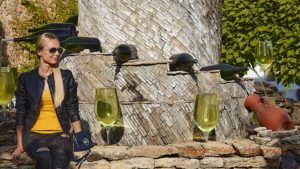 The National Wine Day is celebrated in Moldova the first week-end in October. This is an 18 years tradition. Wine lovers from all over the world can over two days taste wines from around 60 Moldovan wine producers in the city centre of the capital Chisinau, combined with plenty of festivities. But this year will be different. It will not be a big party on the city square. Instead there will be smaller events and tastings at the wineries.
The National Wine Day is celebrated in Moldova the first week-end in October. This is an 18 years tradition. Wine lovers from all over the world can over two days taste wines from around 60 Moldovan wine producers in the city centre of the capital Chisinau, combined with plenty of festivities. But this year will be different. It will not be a big party on the city square. Instead there will be smaller events and tastings at the wineries.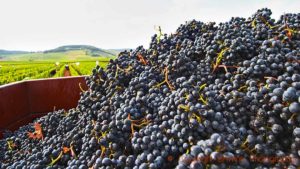 In some places, the harvest started earlier than ever this year. Overall, the quality of the grapes has been exceptional. In Champagne, they started picking already on August 17. The quality of the grapes was top notch with a potential alcohol content of between 10 and 10.5%, which is good in Champagne, and also plenty of grapes. Veronique Dausse, director of the Château Phelan Segur in Saint Estèphe in Bordeaux, says that they started harvesting merlot on September 16 and will have finished with cabernet sauvignon by the end of September. The grapes have been fine and healthy, the quantity relatively small in Bordeaux though.
In some places, the harvest started earlier than ever this year. Overall, the quality of the grapes has been exceptional. In Champagne, they started picking already on August 17. The quality of the grapes was top notch with a potential alcohol content of between 10 and 10.5%, which is good in Champagne, and also plenty of grapes. Veronique Dausse, director of the Château Phelan Segur in Saint Estèphe in Bordeaux, says that they started harvesting merlot on September 16 and will have finished with cabernet sauvignon by the end of September. The grapes have been fine and healthy, the quantity relatively small in Bordeaux though.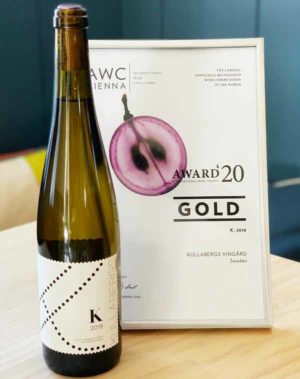 Kullabergs Vingård (Winery) in the south of Sweden received a gold medal in AWC Vienna, a wine competition, with a wine called K 2018. The winery also had three silver medals for the wines Immelen 2018, Lyckeri 2019 and Rosé 2019 and a Seal of Approval for the wine Askesäng 2019.
Kullabergs Vingård (Winery) in the south of Sweden received a gold medal in AWC Vienna, a wine competition, with a wine called K 2018. The winery also had three silver medals for the wines Immelen 2018, Lyckeri 2019 and Rosé 2019 and a Seal of Approval for the wine Askesäng 2019.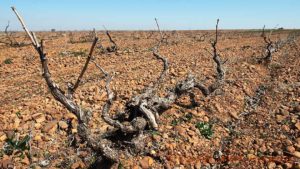 There is an interest today in many wine countries for old, forgotten, grape varieties. Since 1990, the Technical Institute of Agriculture in the region of Castilla y León in Spain (ITACYL) has been conducting research with the aim of reintroducing the best clones of old, local grape varieties that adapt well to global warming.
There is an interest today in many wine countries for old, forgotten, grape varieties. Since 1990, the Technical Institute of Agriculture in the region of Castilla y León in Spain (ITACYL) has been conducting research with the aim of reintroducing the best clones of old, local grape varieties that adapt well to global warming.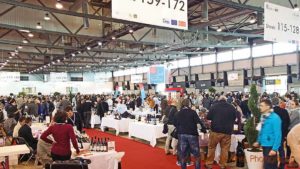 Perhaps this will be the first major wine fair post-Covid-19. If nothing unforeseen happens. Millésime Bio is scheduled to take place on January 25-27 in Montpellier in the south of France. It is a very successful wine fair that entirely specialises in organic wines.
Perhaps this will be the first major wine fair post-Covid-19. If nothing unforeseen happens. Millésime Bio is scheduled to take place on January 25-27 in Montpellier in the south of France. It is a very successful wine fair that entirely specialises in organic wines.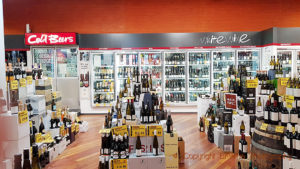 What do consumers want to know about the wine they are about to buy? Do they want a detailed table of contents? No, it doesn’t seem that way if one is to believe a survey done by the Wine Market Council with 1000 respondents. Instead, the consumer wants to know the grape variety and how the wine tastes.
What do consumers want to know about the wine they are about to buy? Do they want a detailed table of contents? No, it doesn’t seem that way if one is to believe a survey done by the Wine Market Council with 1000 respondents. Instead, the consumer wants to know the grape variety and how the wine tastes.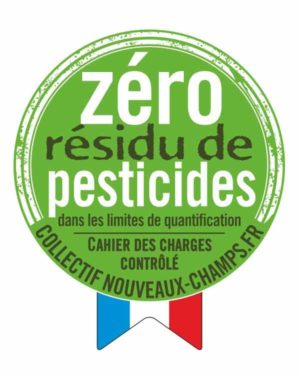 There are different ways to work sustainably and environmentally friendly. Some producers have noted consumers’ fear of pesticide residues in the wine. One path to take is then to work organically and thus completely exclude synthetic chemical spraying. Another is to continue with these products, but on a smaller scale and instead, by way of analysing, guarantee that there are no residues left in the wine.
There are different ways to work sustainably and environmentally friendly. Some producers have noted consumers’ fear of pesticide residues in the wine. One path to take is then to work organically and thus completely exclude synthetic chemical spraying. Another is to continue with these products, but on a smaller scale and instead, by way of analysing, guarantee that there are no residues left in the wine.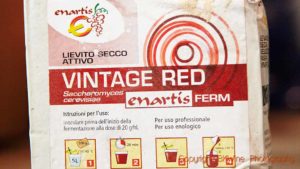 Wild yeast or cultivated yeast? That is the eternal question right now, or at least one can get that impression in certain discussions. It seems as if the wild yeast is gaining ground, but that impression may come from that so much is written about natural wines. For most consumers, it probably does not matter how the wine has fermented, but for some wild fermentation has become a sacred cow. Among wine producers, opinions are divided.
Wild yeast or cultivated yeast? That is the eternal question right now, or at least one can get that impression in certain discussions. It seems as if the wild yeast is gaining ground, but that impression may come from that so much is written about natural wines. For most consumers, it probably does not matter how the wine has fermented, but for some wild fermentation has become a sacred cow. Among wine producers, opinions are divided. 22 “climats”, a vineyard or a vineyard plot in Burgundian parlance, in Pouilly-Fuissé in southern Burgundy can from now on put “premier cru” on the label. It has taken ten years since the process started, which is quite normal. Since 2010, the appellation Pouilly-Fuissé and INAO (Institut National de l’Origine et de la Qualité) have studied the 22 vineyards, their specific growing conditions, their history and their reputation. In total, the 22 plots cover 194 hectares, which is a massive 24% of the entire AOP Pouilly-Fuissé. They are located in four municipalities (communes), Chaintré, Fuissé, Solutré-Pouilly and Vergisson.
22 “climats”, a vineyard or a vineyard plot in Burgundian parlance, in Pouilly-Fuissé in southern Burgundy can from now on put “premier cru” on the label. It has taken ten years since the process started, which is quite normal. Since 2010, the appellation Pouilly-Fuissé and INAO (Institut National de l’Origine et de la Qualité) have studied the 22 vineyards, their specific growing conditions, their history and their reputation. In total, the 22 plots cover 194 hectares, which is a massive 24% of the entire AOP Pouilly-Fuissé. They are located in four municipalities (communes), Chaintré, Fuissé, Solutré-Pouilly and Vergisson.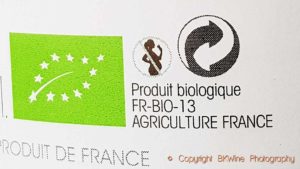 Organic wine is becoming increasingly popular. Many consumers look for it and many producers convert to become organic. But what is it really, organic wine? On this web conference video masterclass we explain what it is.
Organic wine is becoming increasingly popular. Many consumers look for it and many producers convert to become organic. But what is it really, organic wine? On this web conference video masterclass we explain what it is.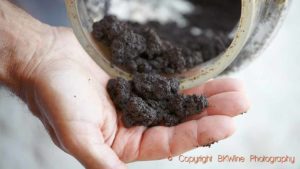 Being biodynamic is not the same as being organic, even though they have many things in common. Only a tiny proportion of organic growers are also biodynamic. But their number is growing. If you want to be biodynamically certified, you must also be organically certified. Using synthetic pesticides or fertiliser is in any case entirely against the biodynamic beliefs. Everything you add to the soil must come from living things, either from the plant kingdom or from the animal kingdom, says Rudolf Steiner, the creator of biodynamics.
Being biodynamic is not the same as being organic, even though they have many things in common. Only a tiny proportion of organic growers are also biodynamic. But their number is growing. If you want to be biodynamically certified, you must also be organically certified. Using synthetic pesticides or fertiliser is in any case entirely against the biodynamic beliefs. Everything you add to the soil must come from living things, either from the plant kingdom or from the animal kingdom, says Rudolf Steiner, the creator of biodynamics.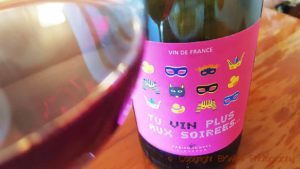 What is natural wine? Are there rules? Is it good or weird? The concept of natural wine has emerged in recent years. It has been covered in media and bated. Many people have never drunk a natural wine and wonder what it really is. What does it mean that a wine is “natural”? Is it even possible? We explain what natural wine is, what the advantages are and which are the challenges. Is it good? Is it undrinkable?
What is natural wine? Are there rules? Is it good or weird? The concept of natural wine has emerged in recent years. It has been covered in media and bated. Many people have never drunk a natural wine and wonder what it really is. What does it mean that a wine is “natural”? Is it even possible? We explain what natural wine is, what the advantages are and which are the challenges. Is it good? Is it undrinkable?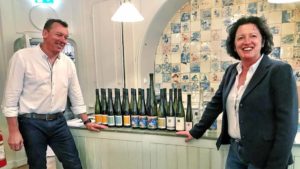 “The same smile, unchanged energy level and sparkling enthusiasm. Long, narrow, graceful flute bottles line up, the humidity condenses into small pearls on the neck and label. Expectant glances follow the bottle from glass to glass while the congregation around the table is silent for a moment. It is sparse with producers visiting Sweden when restrictions shackle growers and winemakers at their vineyards and cellars. Finally, sitting at the table, are Sybille Kuntz and Markus Riedlin from the Moselle and Baden.”
“The same smile, unchanged energy level and sparkling enthusiasm. Long, narrow, graceful flute bottles line up, the humidity condenses into small pearls on the neck and label. Expectant glances follow the bottle from glass to glass while the congregation around the table is silent for a moment. It is sparse with producers visiting Sweden when restrictions shackle growers and winemakers at their vineyards and cellars. Finally, sitting at the table, are Sybille Kuntz and Markus Riedlin from the Moselle and Baden.” The prestigious history of the Bordeaux wines is evident when you see the beautiful, world-famous chateaux, often built in the 18th or 19th century. Tradition is important in Bordeaux but the region is today more modern and exciting than it has been in a long time. Discover it for yourself.
The prestigious history of the Bordeaux wines is evident when you see the beautiful, world-famous chateaux, often built in the 18th or 19th century. Tradition is important in Bordeaux but the region is today more modern and exciting than it has been in a long time. Discover it for yourself.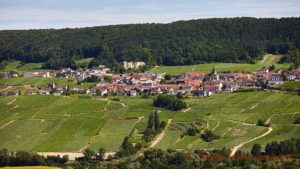 You drink champagne when you celebrate but don’t overlook the fact that it is a fantastic wine to go with a meal too. It you haven’t tried it already; this is one of the many things that you will discover on our Champagne tour. Champagne is superb with food. We will stay in Reims with its stunning cathedral, and you will get to know many of the small villages around Reims and Epernay. Visits to big houses and small, quality conscious growers,
You drink champagne when you celebrate but don’t overlook the fact that it is a fantastic wine to go with a meal too. It you haven’t tried it already; this is one of the many things that you will discover on our Champagne tour. Champagne is superb with food. We will stay in Reims with its stunning cathedral, and you will get to know many of the small villages around Reims and Epernay. Visits to big houses and small, quality conscious growers,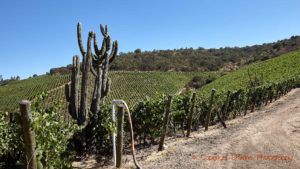 We start the journey in flamboyant Buenos Aires. We then fly across the Pampas to the hot and dry Mendoza, Argentina’s largest wine region. We take a bus across the mighty Andes to the cool coast of Chile. Here are some of the country’s newest cool climate wine regions. We will visit the harbour city of Valparaiso and then we drive south, to Colchagua, recognised as one of Chile’s best wine regions. Of course, we will learn how to best make an asado.
We start the journey in flamboyant Buenos Aires. We then fly across the Pampas to the hot and dry Mendoza, Argentina’s largest wine region. We take a bus across the mighty Andes to the cool coast of Chile. Here are some of the country’s newest cool climate wine regions. We will visit the harbour city of Valparaiso and then we drive south, to Colchagua, recognised as one of Chile’s best wine regions. Of course, we will learn how to best make an asado.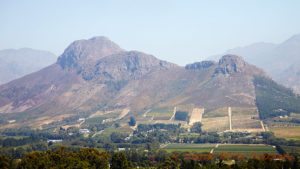 South Africa offers much, much more than inexpensive, straightforward wines. Much, much more. There are plenty of passionate, skilled winemakers. There is a wealth of interesting, exciting wines of world class. Old vines, previously abandoned, are now being cared for. Grapes such as chenin blanc, grenache and cinsault have a renaissance. The important thing now is to make wine consumers around the world realize this. Come and meet the winemakers on site and discover the new South African wines.
South Africa offers much, much more than inexpensive, straightforward wines. Much, much more. There are plenty of passionate, skilled winemakers. There is a wealth of interesting, exciting wines of world class. Old vines, previously abandoned, are now being cared for. Grapes such as chenin blanc, grenache and cinsault have a renaissance. The important thing now is to make wine consumers around the world realize this. Come and meet the winemakers on site and discover the new South African wines.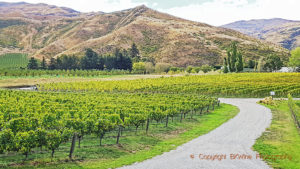 New Zealand has had incredible success with its wines over the past 15-20 years. We quickly got used to drinking their aromatic sauvignon blanc and complex pinot noir. Now we are discovering more and more grape varieties, such as pinot gris and riesling from Central Otago, syrah from Hawke’s Bay and cabernet sauvignon from Waiheke Island. We combine wine tastings with delicious meals and breathtaking nature experiences. A journey to remember for a long time.
New Zealand has had incredible success with its wines over the past 15-20 years. We quickly got used to drinking their aromatic sauvignon blanc and complex pinot noir. Now we are discovering more and more grape varieties, such as pinot gris and riesling from Central Otago, syrah from Hawke’s Bay and cabernet sauvignon from Waiheke Island. We combine wine tastings with delicious meals and breathtaking nature experiences. A journey to remember for a long time.





